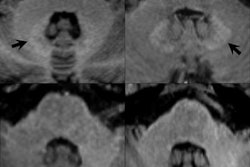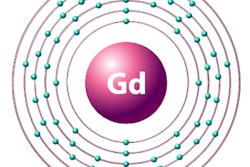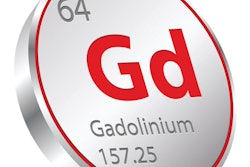
After taking a long, hard, second look at the safety data of gadolinium-based MRI contrast agents, the Pharmacovigilance Risk Assessment Committee (PRAC) of the European Medicines Agency (EMA) is backing off slightly from its prior recommendation that several gadolinium-based agents be pulled from the market.
In a statement issued on Friday, the PRAC retained most of its guidance from March 2017 on linear gadolinium-based MRI agents, again finding convincing evidence of gadolinium deposition in brain tissue following their use. The main difference, however, is the committee now said gadobenate (MultiHance, Bracco) can be used for liver imaging situations where it would meet an important diagnostic need, as is also the case for gadoxetate disodium (Primovist in Europe; Eovist in the U.S., Bayer HealthCare Pharmaceuticals).
However, the PRAC did not change its position on the three other linear agents mentioned in its March 2017 recommendation. The committee continues to recommend the suspension of gadodiamide (Omniscan, GE Healthcare), gadopentetic acid (Magnevist, Bayer) and gadoversetamide (Optimark, Guerbet).
"Another class of gadolinium agents known as macrocyclic agents (gadobutrol, gadoteric acid, and gadoteridol) are more stable and have a lower propensity to release gadolinium than linear agents," the authors noted. "These can continue to be used in their current indications, but in the lowest doses that enhance images sufficiently and only when unenhanced body scans are not suitable."
Liver-scanning guidance
As a result of the review, the PRAC recommends the intravenous linear agents gadobenic acid (MultiHance) and gadoxetic acid (Primovist, Eovist) should only be used for liver scans in situations where they meet an important diagnostic need. In addition, the committee continued its recommendation that gadopentetic acid (Magnevist) should only be used for joint scans because the gadolinium concentration in the formulation used for joint injections is very low.
The review covered agents containing the following active substances: gadobenic acid (MultiHance), gadobutrol (Gadovist, Bayer), gadodiamide (Omniscan), gadopentetic acid (Magnevist), gadoteric acid (Dotarem, Guerbet), gadoteridol (ProHance, Bracco), gadoversetamide (Optimark), and gadoxetic acid (Primovist). Most gadolinium contrast agents have been authorized nationally in the European Union (EU), and Optimark is the only gadolinium contrast agent that was authorized centrally in the EU, the EMA stated.
In line with the PRAC recommendations, Guerbet announced on Friday it was phasing out sales of Optimark.
A final recommendation on gadolinium-based contrast agents from the EMA's Committee for Medicinal Products for Human Use (CHMP) is likely to come following its next meeting, due to be held from 17 to 20 July in London.
The hot debate continues
In the meantime, the hotly contested debate continues, and the PRAC chair Dr. June Munro Raine and her colleagues look set to endure some more sleepless nights. Contrast-agent manufacturers and some academic luminaries undoubtedly will not be pleased with all of the recommendations.
No specific conditions linked to gadolinium deposition in the brain have been identified, but the clinical consequences are unknown, according to the PRAC statement.
How it all began
 Dr. June Munro Raine, PRAC chair. Image courtesy of the EMA.
Dr. June Munro Raine, PRAC chair. Image courtesy of the EMA.The European Commission (EC) requested the review of gadolinium contrast, and it began on 17 March 2016. The PRAC is responsible for the evaluation of safety issues for human medicines, and Raine and her team made their recommendations in March 2017.
Raine is a regulatory physician with experience in risk management and special interests in risk communication, access to medicines, and information to patients, and she is also a member of the World Health Organization (WHO) Advisory Committee on Safety of Medicinal Products.
Following a request from contrast manufacturers, the PRAC re-examined its initial recommendations. Its final recommendations now go to the CHMP, which is responsible for questions concerning medicines for human use. The final stage of the review procedure is the adoption by the EC of a legally binding decision applicable in all EU member states.


















